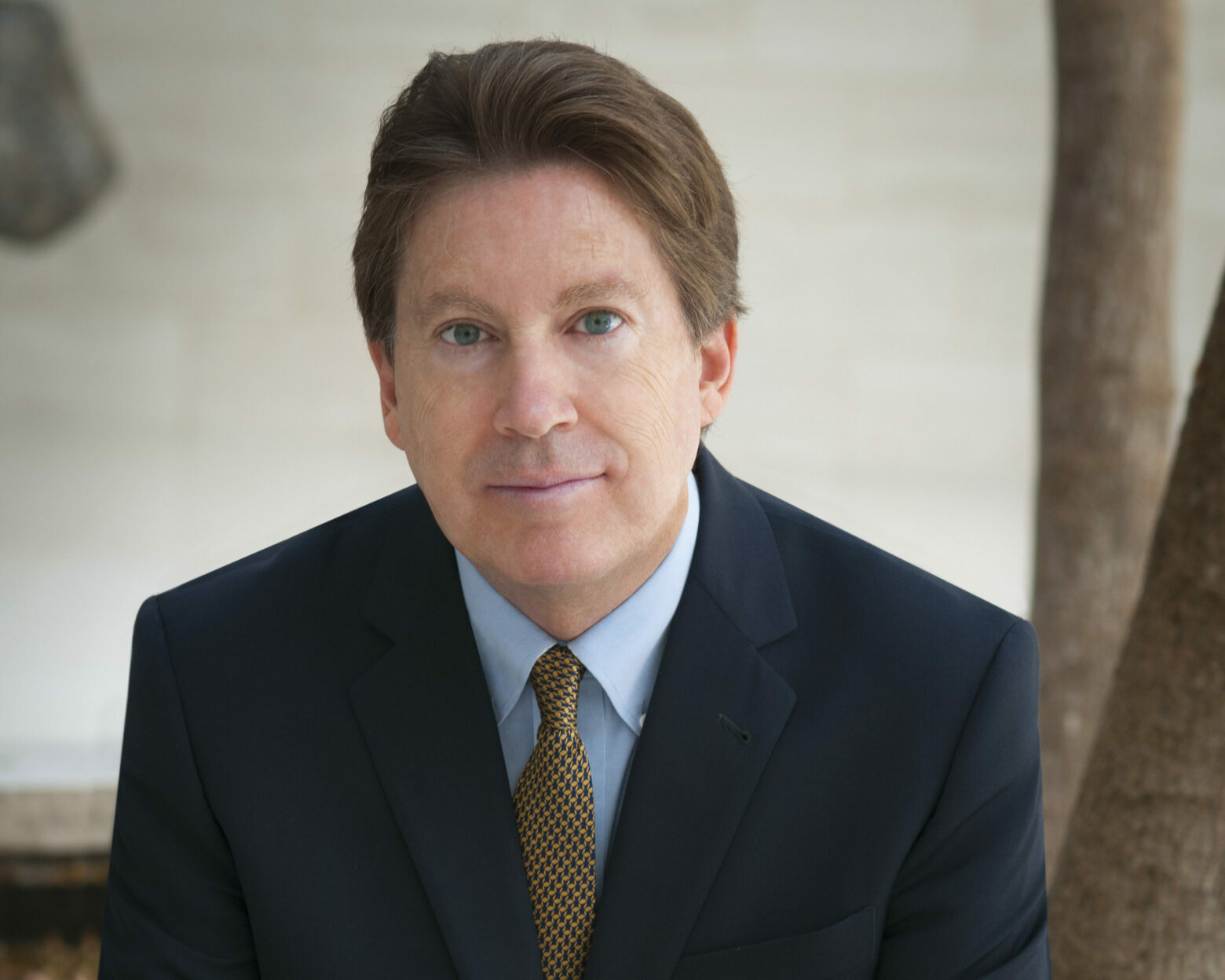Alzheimer’s disease, neurodegeneration, and diet: An interview with neuroscience researcher Dr. Dale Bredesen (part I)

Alzheimer’s disease and other neurodegenerative conditions are becoming one of the leading causes of both mortality and increased morbidity in the Western world. Unfortunately, these conditions have become so ubiquitous that many people simply accept that a loss of mental capacity is a natural but frightening part of aging.
Neuroscientist Dr. Dale Bredesen has researched neurodegeneration for three decades and has published 230 peer-reviewed papers and four books over his career. In those 30 years, he has developed a different perspective, describing Alzheimer’s disease as a modern-day equivalent to polio. He is optimistic that, while it is pervasive now, it can be addressed and become a disease of the past. And, more importantly, he strongly believes that treatments don’t have to include typical pharmaceutical treatments but can come about through modifications to our diet, exercise, and overall healthier living.
Traditionally, researchers believe that Alzheimer’s is caused by the build-up of a molecule called amyloid on the neurons in our brains, and that this leads to atrophy of the neural tissue. [1] It is also known that people with the ApoE4 gene are more susceptible. [2]
Dr. Bredesen’s theory flips the traditional view on its head and states that the build-up of amyloid is not the cause, but a symptom of the true underlying issues. Those issues are both multi-factorial and complex, making Alzheimer’s not a single condition but a host of conditions caused by a variety of insults. [3-4] As a result, Dr. Bredesen believes that traditional medicine, which attempts to remove the amyloid plaques, has little benefit until the underlying issues have been addressed.
The treatment techniques he has developed have become known as the Bredesen protocol. In 2011, he struggled to get approval to publish research on his approach. Now, 10 years later, many doctors are recommending his protocol to their patients.
One of our contributing writers, David Whiteside, wrote about the protocol and Dr. Bredesen’s New York Times bestselling first book The End of Alzheimer’s: The First Program to Prevent and Reverse Cognitive Decline. Central to the protocol is diet; and the diet recommended by Dr. Bredesen has many similarities to The Paleo Diet®.
One sticking point, however, has been Dr. Bredesen’s promotion of long-term ketosis, something we have argued against. We agree it can improve conditions like neurodegeneration and cancer. Interestingly, in our interview with Dr. Bredesen, he discusses ways of achieving ketosis which differ from the standard “keto” diet.
Dr. Bredesen’s latest book, The End of Alzheimer’s Program, published today, Aug. 18. In the book, he explains his protocol in greater depth. The Paleo Diet received an advanced copy and had an opportunity to interview Dr. Bredesen.
We’ve divided our interview with Dr. Bredesen into three parts. In part I, Dr. Bredesen talks about his new book, the origins of his research, and how he views Alzheimer’s disease. In parts II and III, we’ll discuss his dietary protocols, our concerns about long-term ketosis, and his recommendations to both treat and prevent neurodegeneration through natural techniques like diet, elimination of toxins, and exercise.
Why did you write a second book?
The Paleo Diet: I have to say I thoroughly enjoyed your book.
Dr. Bredesen: Thank you so much. I appreciate you taking a look at it. You know, we had a lot of requests after the first book for more details. The first book was really about concepts. It was really about, ‘Can we do something that hasn’t been done before? And how would you go about doing that?’ And, also looking at the 30 years in the laboratory of how does the neurodegenerative process actually work? What are the things that push it, what are the things that drive it?
So, the second one is completely complimentary to the first one. The idea behind the second one is that we want to provide the details. Many people said, well what URLs do we need to know? And what doctors do we need to know? And what workarounds do we have? And where do we buy things? And do we need to buy organic? And all these many, many hundreds and hundreds of details.
I’m really enthusiastic about it because it brought three of us together. I did the handbook part, which is part of the book with my wife, Dr. Aida Lasheen Bredesen, who is a clinician and with a user, Julie G. She is the one who started the ApoE4.info website with over 3,500 people from all over the world who are ApoE4 positive. The vast majority are on some variation of the protocol.
So, she’s really dealt with this and she’s improved her own cognition, going from 35th percentile to 98th percentile. It’s just striking, and she has kept it up for eight years, this sustained improvement. And she’s run into so many issues about: Where to buy this? What about tracking your sleep? What about your oxygenation? Now we have the science, we have the clinical part, and we have the user part, so that you can really get a very practical look at what is needed.
The scientific approach of the book
The Paleo Diet: At The Paleo Diet, we are scientists and tend to live in the research. I’ll admit that I periodically go to the bookstore, look at books on diet, and just get frustrated. But I will say, I read through your book and the thing that really impressed me was your understanding of the science.
For example, we frequently debate the healthiness of red meat. Many of people’s arguments against that stance aren’t backed by science. The biggest one is the TMAO argument. You discuss this in the book and suggest the research isn’t panning out on that. Even more impressive was your inclusion of Neu5Gc1, which few people know about. Yet it is the one argument that encourages me to tell people to eat red meat sparingly. And those two examples come from only one small part of your book.
Dr. Bredesen: Thank you. We’re coming from the lab. I ran a basic neuroscience lab for 30 years, and we were always interested in the same question: Can we understand the molecular basis of the neurodegenerative process? After all, this is the area of greatest biomedical therapeutic failure. As they say, everyone knows a cancer survivor, no one knows an Alzheimer’ survivor.
The bottom line here is very simple. We wanted to treat neurodegeneration and, in particular, cognitive decline of Alzheimer’s and pre-Alzheimer’s by assessing what, for each person, is driving the degeneration.
Dr. Bredesen
So, the whole idea in the lab was, could we understand the molecules that are driving us? What is actually happening? Why is it that Alzheimer’s is now the third leading cause of death in the United States? This is a trillion-dollar global problem. What the heck is going on and why is it that virtually every clinical trial has failed in this area? Why is it if you get a diagnosis of ALS or frontotemporal dementia or Lewy Body disease, you are going to die? There’s nothing that can be done.
So, we really wanted to understand this process. And when we started to understand, ‘Okay, this is what Alzheimer’s actually is, this is the model of what is actually going on in your brain.’ Then we tried to translate it. We started that back in 2011, trying to get the first trial. We actually proposed the first trial that would be comprehensive.
The Paleo Diet: What was it you were trying to research?
Dr. Bredesen: The bottom line here is very simple. We wanted to treat neurodegeneration and, in particular, cognitive decline of Alzheimer’s and pre-Alzheimer’s by assessing what, for each person, is driving the degeneration. It is quite different for each person. People have a combination of things. It’s almost like a fingerprint.
So, you may have anything that changes the fundamental signaling of APP itself: the amyloid precursor protein. It sits in your neuronal membranes, in your synapses especially, and to a lesser extent in other cells. You can trace the molecular pathways through estradiol, for example, through vitamin D, for example, through NF-κB in the inflammatory cascade, and on and on and on.
So, the goal here is simply to address those things [pathways] and to drive yourself back from a synaptoclastic state where you’re literally pulling back on your synapses, which is what’s happening in Alzheimer’s. It is literally synaptoperosis to a synaptoblastic state in which you are capable of making and keeping new synapses.
The Paleo Diet: How do you do that?
Dr. Bredesen: It’s important to know what your diet is; it’s important to know whether you’re in ketosis; it’s important to know what sort of polyphenols you’ve got on board. It’s important to know whether you have a leaky gut, on and on and on. Human physiology is complicated.
So, the concept is simple. Change the signaling of APP to the good side from the bad side. How that plays out, the realization of it, is complicated. Just as you indicated, things like TMAO come into effect and all these different things.
But the great news is we’re seeing people have hope who never had hope before.
Dr. Bredesen
I admit, upfront, unlike [something like] mathematics, where you’ve got concepts that you can be extremely specific about, what we found is very predictive. It predicted the first people who got better, it predicted how to prevent and reverse cognitive decline, but it’s a long way from perfect.
[If you think back to the beginning of flight,] we’re back at Wilbur and Orville being up [in the air] for whatever it was, 28 seconds or something. It’s the beginning of something. It’s not the ending. We’ve got a long way to go. As you know, there are a lot of gaps. People are saying, “Well, why don’t you just eat meat 24-7?” And I think that’s a very interesting point. So far, the data supports the idea that you really want to have a plant-rich, high-fiber, mildly ketotic diet that has things like polyphenols in it. But I’m open to the possibility.
We’re agnostic. Whatever drives improvement in cognition. And, certainly, for people who have autoimmune conditions, a carnivorous diet has been helpful for many of these people. What we haven’t seen yet is that it actually helps improve and sustain improvement of cognition for people with cognitive decline. But I’m interested to see that. We’ll see.
So, we’re all evolving toward better and better approaches to cognition. And time will tell. This is still early days. But the great news is we’re seeing people have hope who never had hope before. And so it means hundreds and hundreds and hundreds of people. We published 100 of them, who have documented and sustained improvement in 2018.
And we’re now actually writing up more. We have PET scan improvements, MRI improvements, quantitative assessment of cognition improvements, and on and on. It’s really striking and exciting to see these people who had no hope before.
The Paleo Diet: Just fantastic.
Alzheimer’s may be a group of conditions that are the result of protective responses
The Paleo Diet: Let’s take a quick step back. You raise an important point in your book: Part of the reason the medical field is struggling with this disease is because they’re focused on identifying that one cause or one mechanism that explains Alzheimer’s. But you suggest there’s many different types of Alzheimer’s. Most people with Alzheimer’s don’t just have one, and their disease has multiple mechanisms.
Can you give a quick explanation of a) APP and b) the different types of Alzheimer’s that you’ve identified.
Treating with a monotherapy is just as if you’re a mechanic and every time a car came in, no matter what was wrong with it, you just added oil.
Dr. Bredesen
Dr. Bredesen: Yeah, that’s a great point. And this is, on the one hand, why things have worked. We’ve come at this from a very different angle. Instead of just saying, “Okay, let’s study amyloid’ or ‘let’s study tau and phosphor-tau’ or ‘let’s study cerebral spinal fluid flow’ or any of those things, we started from the very beginning.
And frankly, I never thought we’d get to clinical usefulness during my lifetime. So, I was surprised when we could begin to see, ‘Okay, this is how this thing, when you start taking it apart, really works. And let’s see if it does work this way. Then that would mean we should try this… Let’s try it.’
So, when you look at what’s at the basis of this, everybody with Alzheimer’s has the production or continuation of amyloid beta. Amyloid beta is the stuff in the plaques in the brains of patients with Alzheimer’s. And the assumption had been, ‘Aha, since it’s in there, it must be bad.’ Well, of course, that’s a big assumption. It turns out that it is bad for your brain, it does cause the brain to downsize.
On the other hand, what’s really interesting is it’s not the upstream cause of the problem. And people have really gotten that backwards. It is a mediator. So amyloid beta is produced from APP, a molecule called amyloid precursor protein. So, as the name implies, it’s the precursor to this amyloid, and APP turns out to be a molecular switch.
The Paleo Diet: You had an analogy for this in your book.
Dr. Bredesen: Yes, amyloid beta is caught in one of two different ways. It’s like you’re the president of “My-brain-istan.” When things are good, when you have enough nerve growth factor, brain-derived neurotrophic factor, vitamin B12, low enough homocysteine, low enough inflammation, high enough vitamin D, testosterone… on and on and on. All the things that are supportive. It’s just like a country that’s doing well, has plenty of money in the coffers, is not being invaded by anyone, doesn’t have major pollution. Then you decide it’s time to build new bridges, build new intersections, it’s time for our country to thrive. You’re going to do new programs.
All of these things have analogies to what’s going on in your brain. This is exactly what APP does. So, it’s now cut at a single site by alpha-secretase, giving you two fragments. One’s called SAPP-a which goes outside the cell and the other one is a-CTF which stays inside the cell. So, you’re signaling the world both outside and inside, “Hey, we’re going to grow and maintain.”
And by the way, estradiol, for example, increases the production of this alpha secretase. So, all of these different things that support your brain, when times are good, are telling you, ‘Fine, you can go ahead and make and keep new memories, new synapses.’
On the other hand, when things are bad, you are going to signal differently. Now you lose your trophic support, you lose your NGF and BDNF. You lose your hormones, you lose your nutrients, you have inflammation going on. It’s just like a country being attacked, that has pollution, that has no money in the coffers, that has runaway inflation. It must pull back.
And as Professor Rudy Tansy and Robert Moyer from Harvard showed a number of years ago, the amyloid itself is actually an anti-microbial peptide. So interestingly, the amyloid that we vilify in Alzheimer’s disease is actually a protective response.
The Paleo Diet: How can something that’s downsizing your brain be a protective response?
Dr. Bredesen: Well, this is just like COVID-19. What have we done with COVID-19? We’ve said, ‘Okay, we’ve got to protect ourselves. We’ve got to pullback. We’ve got to shelter in place. We’ve got to social distance.’ And what’s happened to our economy? We’re now in a recession. Once again, we’ve got more unemployment.
So, the protective pullback that we’re all experiencing with COVID-19 is directly analogous to what happens to your brain. When things are bad, your APP is cleaved at three sites to produce four peptides that are all about pulling back. The amyloid beta itself is actually there to protect you—to kill microbes.
But unfortunately, as part of this protective response, you downsize your neural network. What we want to deal with is the upstream problem. What are the insults that you’re pulling back from?
As long as you have cognitive decline, as long as you are exposed to those insults, you will continue to make the amyloid.
Dr. Bredesen
The Paleo Diet: What does that protective response involve?
Dr. Bredesen: The idea that people have had for years is, ‘Let’s just get rid of the amyloid. That’ll be good enough.’ But that’s biologically naive. It’s saying, ‘You know, we don’t know where it comes from. It just comes from somewhere.’ Well, we’re seeing what happens.
And by the way, getting rid of the amyloid is directly analogous to what happened with the reopening a few weeks ago [early June 2020]. What happened? Everyone said, ‘Okay, we’re going to ignore the fact that there’s a threat out there, and we’re just going to start coming out of our pull back.’ And what happens? Massive numbers. We’re now having to pull back once again.
As long as you have cognitive decline, as long as you are exposed to those insults, you will continue to make the amyloid. You will continue to have the synapto-clastic signaling of APP and you will continue to pull back until you have a smaller and smaller hippocampus, fewer and fewer synapses, and a smaller and smaller brain.
Our job is to identify and address all of the various insults that are ongoing. And unfortunately, when you go to an expert, they’re not actually evaluating the things that are causing the cognitive decline. So what they tell you is, ‘Oh, you’ve got a disease called Alzheimer’s.’ Which, of course, is just a person’s name. It means nothing. It’s like saying to someone, your car’s not working because you have car-not-working syndrome, it means nothing.
Treating with a monotherapy is just as if you’re a mechanic and every time a car came in, no matter what was wrong with it, you just added oil and said, ‘Okay, that’s it.’ And of course, that would work for a couple of cars, but the vast majority of cars, it would not work. And that’s exactly what’s happened with these monotherapies.
And again, it’s great to get rid of amyloid, but only after you get rid of the upstream causes of the amyloid.
The types of Alzheimer’s and their upstream causes
The Paleo Diet: And what are those upstream causes?
Dr. Bredesen: It leads directly to what you talked about, which is the different sub-types. So there are many things that drive your APP, which is looking at all these different signals. It’s looking to see if you have inflammation, if you have infections. And what do you see in the brains of Alzheimer’s disease patients? You see herpes simplex from your lip, you see P. gingivalis from your dentition looking at whether you’ve got plaque, you see T. denticola from poor dentition. You see F. nucleatum Prevotella, you see HHV6A, which is another herpes virus family member, so on and on.
All these different things can enter your brain and are causing you to have an inflammatory response. And part of that inflammatory response is amyloid. So, it is part of your innate immune system, which is amazing.
So, type I Alzheimer’s is inflammatory or hot Alzheimer’s. And again, there’s a typical picture. This is often a 60s-year-old person that has ongoing systemic inflammation, and therefore, of course, also at risk for cardiovascular disease.
As you know, there are about 80 million Americans who have metabolic syndrome. That’s a big driver of cognitive decline. The epidemiologists have shown us this for years. And so that’s something you need to look at. So that’s type I.
Type II is a trophic [form]. Very different. So, in that case, it’s not that you have this dramatic neuro-inflammation driving your synapses to pull back. It’s a little bit like your type I group has people attacking you, type II is you just don’t have the money to keep things going. And that’s what happens when you’re low on vitamin D, when you’re low on testosterone, pregnenolone, progesterone, estradiol, thyroid hormone, B-12, nerve growth factor, on and on and on.
All these things are critical to keep this incredible network of 500 trillion plus synapses that you’ve got in your brain working.
Keep reading! Part II of our interview with Dr. Bredesen talks about the effects of environmental toxins, his efforts to get his study approved, chronic inflammation, and the impact of wheat on both the gut and neurodegeneration. In part III, we dive deeper into ketosis, fasting, and the impact of diet.
References
[1] J. Hardy and G. Higgins, “Alzheimer’s disease: the amyloid cascade hypothesis,” Science, vol. 256, no. 5054, pp. 184–185, 1992, doi: 10.1126/science.1566067.
[2] R. Rao, A. Patent, Q. Zhang, S. Flores, and D. Bredesen, “P3-164: Cellular effects of APOE4: Implications for Alzheimer’s disease,” Alzheimer’s Dementia, vol. 7, no. 4, pp. S569–S569, 2011, doi: 10.1016/j.jalz.2011.05.1604.
[3] D. E. Bredesen, “Neurodegeneration in Alzheimer’s disease: caspases and synaptic element interdependence.,” Mol Neurodegener, vol. 4, no. 1, p. 27, 2009, doi: 10.1186/1750-1326-4-27.
[4] D. E. Bredesen, “Reversal of cognitive decline: a novel therapeutic program.,” Aging, vol. 6, no. 9, pp. 707–17, 2014.
[5] M. O. Altman and P. Gagneux, “Absence of Neu5Gc and Presence of Anti-Neu5Gc Antibodies in Humans—An Evolutionary Perspective,” Front Immunol, vol. 10, p. 789, 2019, doi: 10.3389/fimmu.2019.00789.
[6] E. C. M. B.-V. der Linden, E. R. Sjoberg, L. R. Juneja, P. R. Crocker, N. Varki, and A. Varki, “Loss of N-Glycolylneuraminic Acid in Human Evolution IMPLICATIONS FOR SIALIC ACID RECOGNITION BY SIGLECS,” J Biol Chem, vol. 275, no. 12, pp. 8633–8640, 2000, doi: 10.1074/jbc.275.12.8633.
The Paleo Diet Team
The Paleo Diet® team consists of a group of scientists, journalists, experts, and recipe creators who stay at the forefront of nutrition science.
More About The Author




